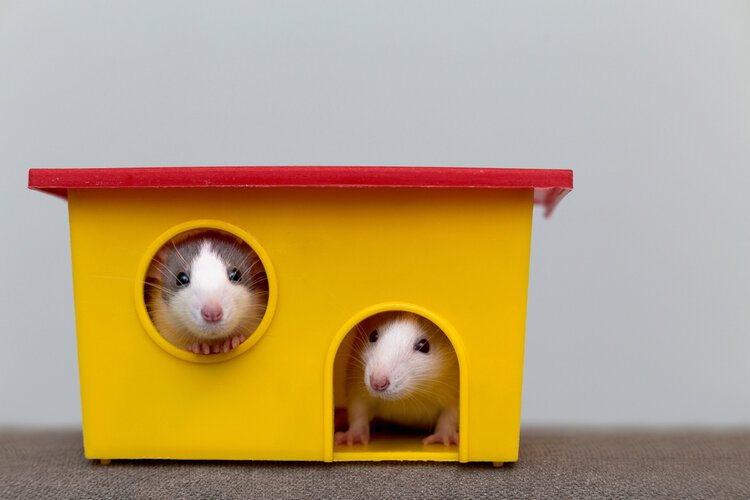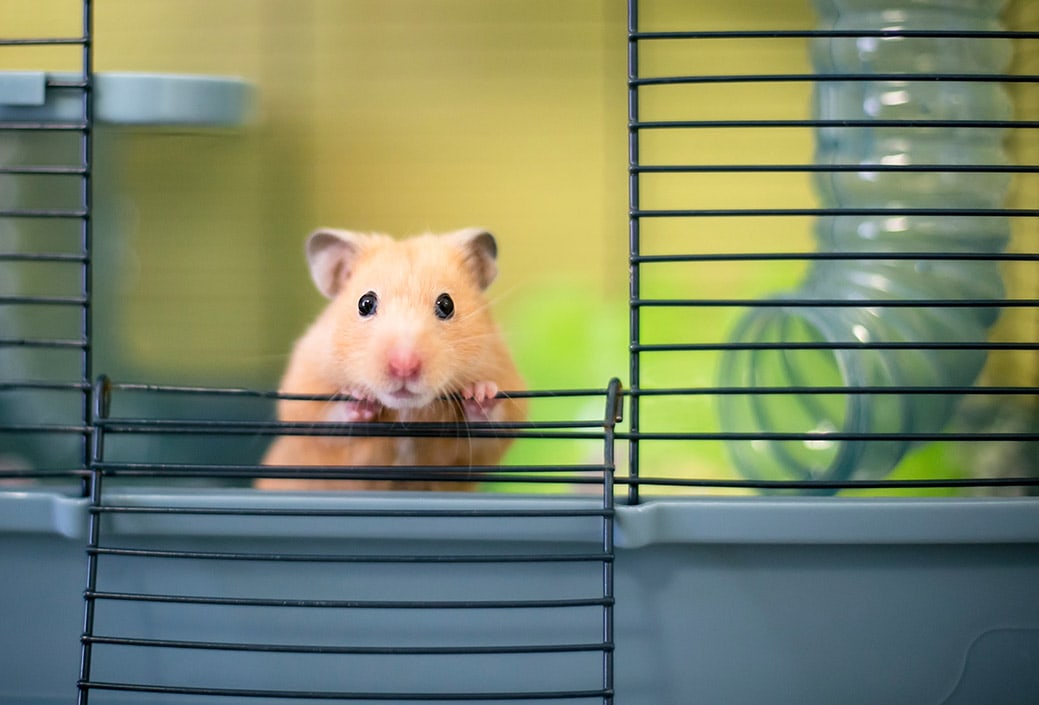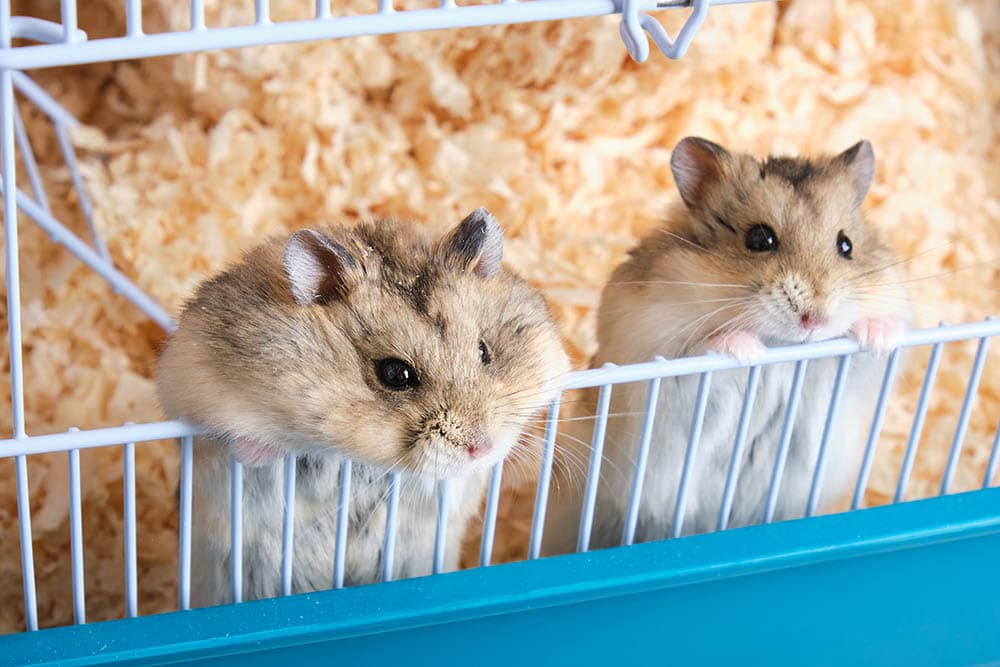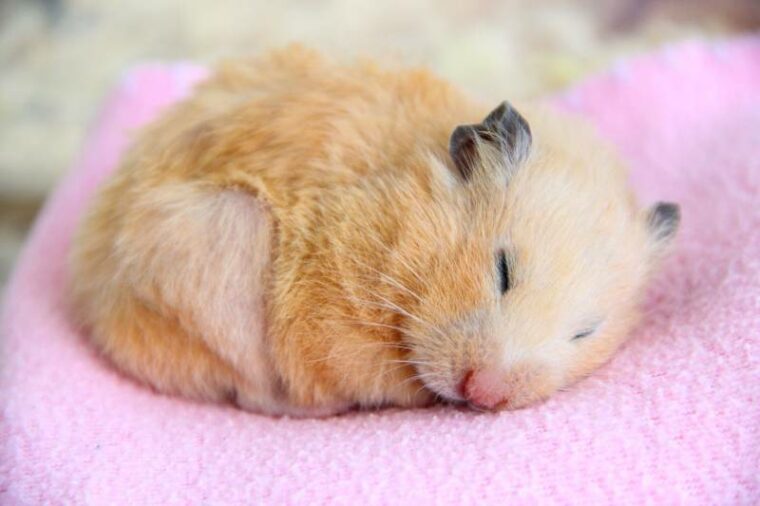
Hamsters are popular pocket pets and tend to be considered wonderful “starter pets” for children because they are fairly low maintenance. However, being familiar with hamsters and their needs is still essential.
If you have found yourself with a pregnant hamster, knowingly or unknowingly, you likely want to know how long hamsters are pregnant. Hamsters are pregnant for an average of 16 to 22 days, depending on the species.
Here, we delve into hamster pregnancy and how long a few of the different species are pregnant. We also go through what to expect if your hamster is expecting.
How Long Are Hamsters Pregnant?
The average length of time of pregnancy across all domestic species of hamsters is 16 to 22 days.
There are about 24 species of hamsters, but only a few make suitable domesticated pets. Here are five common species kept as pets and how long each is typically pregnant.

Syrian Hamster
The Syrian hamster is also called the Golden and Teddy Bear hamster because of their golden-brown fur. These are among the most popular species of hamsters kept as pets. Syrian hamsters are about 5 to 9 inches long and have a 2- to 4-year lifespan.
They are solitary in the wild and tend to be territorial, so they should be housed alone. Syrian hamsters that are introduced to humans at a young age are very social and easy to handle.
The average pregnancy for the Syrian hamster is 16 to 17 days, so just a little over 2 weeks.
Chinese Hamster
The Chinese hamster is about 3 to 5 inches long and has a 2- to 3-year lifespan. They are a long, slim hamster compared to others. They are usually brown with a black stripe running along their back and a light-colored belly.
The Chinese hamster can live with other hamsters and are friendly and comfortable with being handled as long as they have been handled since they were young. They can be nervous and will bite if improperly handled and are quite quick, so care is needed while holding one.
Chinese hamsters are pregnant for an average of 18 to 21 days, which works out to 3 weeks or so.
Dwarf Roborovski Hamster
The Dwarf Roborovski only grows to about 2 to 3 inches and lives for about 3 years. Due to their tiny size, it’s best not to handle them too often, as it’s easy for them to escape.
These hamsters have light brown fur and white bellies with white markings around their eyes. They are a social breed and can sometimes be kept with other hamsters of the same species if they are introduced at a young age. However, they may still be aggressive towards their conspecifics; females in particular can be aggressive when they are mating.
The Dwarf Roborovski is typically pregnant for about 20 to 22 days.
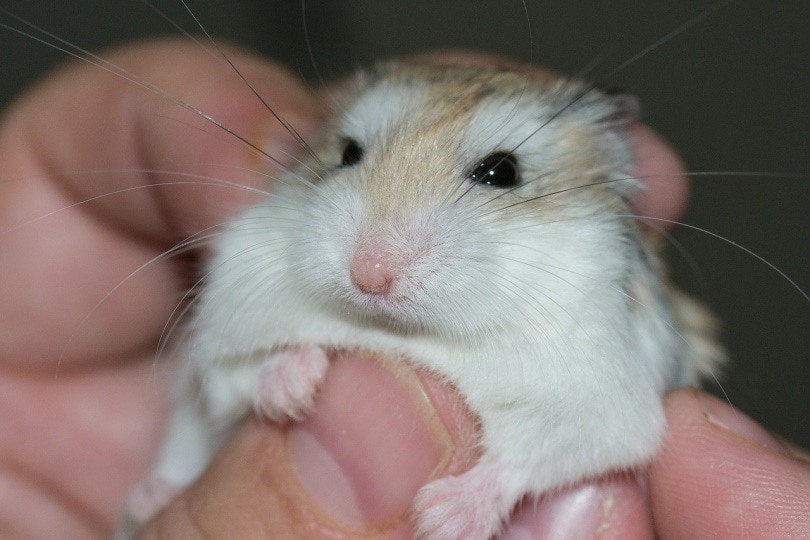
Campbell’s Dwarf Russian Hamster
The Campbell’s Dwarf Russian hamster only grows to about 2 to 4 inches and lives for about 1 1/2 to 2 years. They are grayish brown with a white belly and a dark stripe down their back. They can be kept in groups that are the same sex and are friendly as long as they’ve been appropriately tamed and handled. But they are prone to nipping when frightened or threatened.
The Campbell’s Dwarf Russian hamster is pregnant for about 18 to 21 days, so about 3 weeks.
Dwarf Winter White Russian Hamster
The Dwarf Winter White Russian hamster, also known as the Djungarian Hamster, is about the same size (3.5–4 inches) and has the same lifespan (up to 2 years) as the Campbell’s hamster. They are quite docile and less inclined to bite than other species, and they can be kept in groups or same-sex pairs.
The Dwarf Winter White Russian hamster has a round body, short nose, dark gray fur with a black stripe down the back, and a white belly. They can turn completely white in the winter, hence the name.
This hamster is pregnant for 18 to 21 days, so approximately 3 weeks.
 Before Your Hamster Gives Birth
Before Your Hamster Gives Birth
The main thing to give your hamster is material for her nest. You can give her strips of facial tissue or toilet paper, which will make for nice, soft bedding.
You should also thoroughly clean the cage because you won’t be cleaning it for a while after she’s had her babies. Remove the toys and the running wheel from the cage. When the babies start to move around, they will initially be blind and can be accidentally injured.
You should also move any other hamsters sharing the enclosure. They will stress out the mother, and they might kill the pups.
Ensure that she has enough food to eat at all times. She’ll need extra protein to help support her pregnancy and until the babies are weaned. It is beneficial to provide her a high-quality hamster diet, with some extra nutrition in the form of small bits of boiled egg or freeze dried mealworms. You should also speak to your vet about the best way to care for your pregnant hamster.
How Many Pups Are Found in a Hamster’s Litter?
Most hamster litters contain about 6 to 8 pups, regardless of species. Though more pups are possible in some cases, a female hamster only has 12 nipples and therefore many pups in exceptionally large (albeit rare) litters don’t survive.
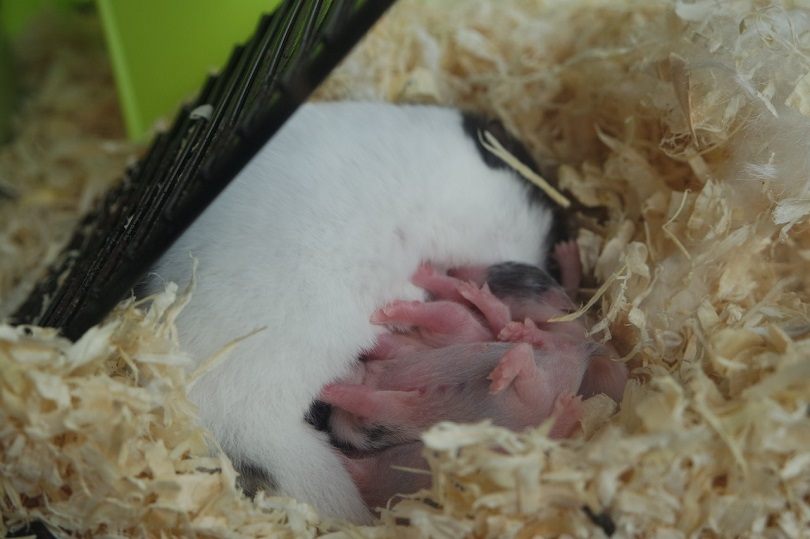
What Should You Do After a Hamster Gives Birth?
Hamster pups are born naked, deaf, and blind. For the first week, the mother and babies must be left alone, with absolutely no interference from you. However, you should still provide the mother with fresh, clean drinking water and fresh food on a daily basis.
Only place food and water inside the enclosure, and don’t try to clean the cage for a few weeks. Pups can slowly be introduced to gentle petting and touches when they are about 7 days old, though it’s best to wait till they are slightly older (approximately 8-10 days)
The babies shouldn’t be removed from their mother until they are about 3-4 weeks old and fully weaned.
These timings will vary from species to species, but the most critical point is to give the mother and babies their space. Stressing out a mother might lead to her killing her babies, so don’t worry about cleaning out the entire cage. Hamsters can also be toilet trained to relieve themselves at a particular spot. It’s advised to train a female you plan on breeding at an area far away from her nest, which you may quietly clean out without disturbing her while she’s with her pups.
Ideas to Make This Time Less Stressful for the Mother
Beyond not interfering for the first week (except in the case of an emergency), you can take a few more steps to minimize the mother’s stress.
Before she gives birth, relocate the enclosure to a quiet location if it isn’t already in one. It will also help if you place a blanket over the cage, which can block out noise and anything visual that might stress her out.
If you really want to look at the babies, you can do so, but it should just be quick peeks and not sitting and staring at them. Keep in mind that the mother might act aggressively toward anyone approaching the cage, but this is normal behavior.
Remember to keep things quiet and calm, and other than feeding her and changing the water, just let nature take its course.
Summary
Hamsters are only pregnant for an average of 16 to 22 days. Once you find out your hamster is pregnant, before you know it, there will be baby hamsters! Help her prepare for the birth, and keep her as stress free as possible.
Remember that your hamster might not be her usual sweet self until after her babies have left the nest. Be understanding and leave her be for the most part. Don’t forget to speak to your vet about any questions or concerns.
Related read:
Featured Image Credit: Alex Milan, Shutterstock



